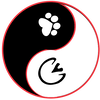 UUUUUGHHHH my dog has fleas !! A common veterinary complaint this time of year is the abundance of fleas both on your pets and in the house. Sometimes the mass bloom feels like an over whelming invasion leading you to toxic chemicals and flea bombs. There are some simple steps you can take to make you and your pet flea free. As we all have experienced, fleas bites cause itching and redness. They can also lead to a more serious form of allergic dermatitis that has a vicious feed back cycle of itching and scratching, eventually leading to crusty, oozing sores or your poor puppy. They can transmit tapeworms and some blood born diseases. The first step in your battle against the flea is to know your enemy. The flea has a multistage life cycle. Adults live on mammalian hosts and lay eggs on the skin which fall off and hatch in the environment. Larvae emerge in as little as 4 days and live off organic debris ie. skin cells, dust bunnies, ect. They then pupate like a catapillar and grow into their adult form then hatch and look for a host. At any one time, the majority of the fleas in your environment are in the egg, larval and pupal stage with only about 5% living as adults on your and your pets. As you kill off the adults, the new generation emerge so flea control must include killing young stages too. I recommend trifexis which is spinosad with milbemycin oxime) for a monthly oral treatment for fleas, intestinal parasites and heartworm. Spinosad has high efficacy, a broad insect pest spectrum and low mammalian toxicity. Spinosad is considered a natural product derived from a mold found on crushed sugar cane and is approved for use in organic agriculture. Comfortis is the name brand of spinosad alone and can be used in cats and dogs. (Warning : there are certain breeds sensitive to milbemycin oxime so as always, check with your veterinarian 1st before starting this medication.) These products will start killing fleas in 30 minutes and kills 100 % of fleas within 4 hours. One of the best and easiest ways to break the flea lifecycle is to vacuum at least 1 per week and wash your bedding and the pets beds with diatomaceous earth. This is a white powder made from tiny fossilized skeletons of Diatoms, tiny phytoplankton made up mostly of silica. The edges of the diatoms slice into the insect and cause it to dry out. Sprinkle a very thin layer around the house before vacuuming and make sure to change your vacuum bag or container as soon as you finish as the eggs can live in the bag. Light traps ( small desk lamp shining on a tray of soapy water is also an effective adult trap and will give you an idea how many fleas you have and if your efforts are working. Start with a dusting of diatomaceous earth into your pets skin and wait a few minutes and then using a flea comb, manually extract the fleas. This is your best choice with very small pets or weak or sick animals. A warm soapy bath will do wonders to get rid of the bulk of the fleas. Fill the tub or sink with soapy water and put your puppy in it. Be prepared for mass exodus as they try to jump ship. With your flea comb, try to remove as many fleas as you can and submerge them in the soapy water. Diatomaceous earth does not work when wet so wait a day or so after the dusting for the bath. The dusting and the bath are great treatments for a sudden surge in fleas or between monthly treatments. The addition of yeast and apple cider vinegar to your pet’s diet will also greatly help his battle against fleas. If your pet is suffering from flea bite dermatitis, you may need to add in a little TCVM along with some TLC to help break the itch scratch cycle. Driving Radio show episode 106 July 17, 2013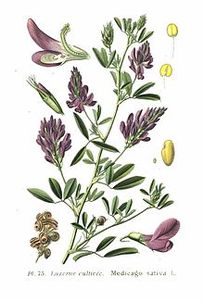 You rescue a starving pony and the first thing you want to do is feed him all the grain, apples and carrots he will eat right ? Well that is very well meaning but can be life threatening for your new little pal because of re-feeding syndrome which is a metabolic crash when the body is introduced to carbohydrates again. (metabolism geeks - see box below) So before your neighbor calls the humane society on you, how do you know if your pony is actually starving or just skinny ? Ask yourself these 3 questions. 1. Is he a body condition score of less than 3 ? 2. Has he eaten any food in the last 5 days ? 3. Has he lost more than 15 % of his body weight within 2 months or less ? If you answered yes to any of these, call your vet, resist temptation to deworm and vaccinate for 2 weeks, get some probiotics and follow the rule "go low and slow ". Low sugar and carbohydrates and multiple small meals throughout the day gradually building up to free choice food over 14 days. Feed a high protein low carb food, like Alfalfa and make sure he has access to fresh, clean water and salt. Day 1-3 Feed 1 lb (1/4 flake) of alfalfa hay every 4 hours. Day 4-7 4 lb about (1 flake) and decrease the frequency of feeding to every 8 hours Day 7-14 Continue feeding at this rate while slowly increasing the amount and decreasing the frequency until the horse is receiving all the hay it wants in a day. If feeding grass hay, feed 2x the amount at the same rate. At the end of 2 weeks you can introduce grain. Choose something with high fat, high fiber, low starch, low sugar. Senior feed is best as it is nutrient dense, high fat and easy to chew. Feed ½ pound of concentrate twice a day then increase grain by ½ pound a day every 3 days until the horse is being fed ½ to 1 pounds of grain per 100 pounds body weight per day in 2 feedings. So a 500 lb pony will be eating 5 pounds of senior feed per day. A safe rate of weight gain is about 1 lb per day. Make sure to have your vet or a friend who does not see your pony every day asses your progress. At the end of 2 weeks you can now work on his other problems which may include any and all of the following :
Choose one problem at a time to work on as you peel the layers of the onion away on your road to recovery. Start with parasites and just assume this pony has never seen any dewormer in his life and is full of worms. On day 14, give ½ dose of one of the paste dewormers containing one of the Here again, resist the "more is better " approach and buying the best dewormer there is that kills everything. Intestinal parasites in horses live in various stages in the body. Some are imbedded in the tissues, some are living in the gut lumen and some are eggs on their way out to infest your pastures. You want to start with fenbendazole (Panacur or Safe-guard) which is a mild dewormer because it only kills the adults in the lumen of the intestines. Killing all the larva lurking in the tissues can lead to an inflammatory reaction in the gut leading to colic and laminitis. Day 14 - 1/2 dose of Panacur Day 21 - 1/2 dose of Panacur Day 28 - full dose of Panacur Day 42 - 1/2 dose of Ivermectin Day 56 - Power Pac - 5 day treatment of Panacur then continue on a maintenance deworming schedule The theory behind this schedule is to kill off the parasites in the gut and then wait a week to let some larva emerge, kill off the next round and treat again so you are treating the wave of emerging parasites. The Ivermectin kills bots (fly larve in the stomach) and thread and neck worms that cause inflammation in the skin and eyes. The 5 day power pack kills the rest of the larva (encysted strongyles) which hopefully by now are down to a reasonable number and will not cause an inflammatory reaction. Of course this is a general guideline so consult with your veterinarian so you can decide whether your pony is ready for this treatment. Some things to consider : Dos
Don'ts
Re-feeding syndrome - occurs when a starved horse is fed too quickly during his rehabilitation. During the period of starvation, the body goes into a state of ketosis and uses fats for its main source of energy because it doesn’t have carbohydrates. Ketosis changes the electrolyte balance in the cells and depletes the body’s stores of essential minerals like phosphate, potassium and magnesium. Because the animal is not eating, he can not replenish these stores. If carbohydrates are introduced too quickly, the body releases large amounts of insulin to process the carbs. Carb metabolism requires large amounts of phosphate, potassium and magnesium but because the starved animal is running on empty already, he suffers symptoms related to electrolyte depletion like heart palpitations, respiratory distress, paralysis, organ failure, confusion, and weakness. This occurs in all mammals but in horses some of the consequences can also include laminitis (founder) and rhabdomyolysis (tying up).
This condition was first fully understood in people in 1950 when prisoner of war veterans who were malnourished in captivity were released back to the American military and is a common consequence in anorexic patients. Archived from 5elements4animals.com originally posted on Jan 4, 2012
Archived from 5elements4animals.com originally posted on November 22, 2011  As I'm traveling through LAX on the busiest travel day of the year, I'm thinking, 1. I need ginger tea STAT and 2. I'll blog about herbs to relieve sinus congestion. The beautiful sweet smelling Magnolia (officinalis) blossoms are commonly used in chinese herbal formulas. The flower bud, aka Xin Yi, is used for treatment of sinus congestion and sinus headaches, and is taken orally and is also used as a transporter of the herbal medicine to the nose and sinuses, meaning I would use this herb in conjunction with a for example, a general anti cancer herbal, like stasis breaker to treat a nasal tumor. Magnolia bark aka Hou Po is also used and has a very wide range of applications. Many of the formulations with magnolia bark are aimed at treatment of lung disorders (including cough and asthma) or intestinal disorders (infections and spasms); magnolia bark is also a common ingredient in the treatment of abdominal swelling and general edema. Recently researchers in Nanjing isolated 2 compounds from the bark, magnolol and honokiol, two polyphenolic compounds that have demonstrated both anti-anxiety and anti-angiogenic (decreases the growth of new vessels) properties. So the next time you catch the fragrant aroma of sweet magnolias, take a deep breath for health... I'm hoping it will save me from baby shipping fever on the plane. This picture is of Marged Harris's table @ Beggars Ride Bed,Barn & Breakfast in Southern Pines , NC. In addition to the healing properties of magnolia, taking time to enjoy the natural beauty around you and spending time with loved ones can greatly reduce anxiety :) Archived from 5elements4animals.com originally posted on October 25, 2011 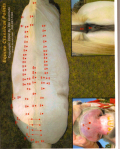 The bladder meridian is paired with the kidney meridian and is associated with the water element. It begins at the inside corner of the eye, travels up on either side of the atlas (first cervical vertebra) and travels along both sides of the spine down the neck, and along the back, over the gluteals, down the hind leg and ends at the ting point at the foot. The kidney meridian begins between the heel bulbs of the hind foot, travels up the inside of the hind leg, along the abdomen and ends at the pectorals. Because of its location, points on the bladder meridian can be used for diagnosis and treatment of local muscle pain, eye and ear problems. Points on the bladder meridian on the back from the 2nd thoracic vertebral space to the end of the sacrum are used to stimulate the spinal nerves as they exit the spinal column. These nerves are not only important for muscle movement, pain and skin sensation but also innervate the viceral organs. These points are called Bladder association points because we can use them to treat and diagnose problems of the organs they are associated with. For example, Bl 13 located near the 8th intervetebral space near the back edge of the shoulder, is associated with the lung so can be used for cough, heaves, asthma, fever and anhydrosis. It can also be used for local shoulder or wither pain. The bladder and kidney meridians are also very important sites for treatment of hormonal and reproductive problems, incontinence, edema and arthritis. The bladder points in the lumbar and sacral area are the most commonly used acupuncture points in both animals and people. Who doesn't have qi deficiency (tiredness) and qi stagnation (low back pain) ? Chiropractic treatment in conjuction with acupuncture is very powerful when there is stagnation in the bladder meridian. Chiropractic manipulation is used to resolve vertebral subluxations. A vertebral subluxation occurs when there is a lack of normal movement in the joints of the spine. This can cause congestion of the spinal nerves as they exit the vertebral foramen ( the space between the vertebrae, where the spinal nerves enter and exit the spinal canal) Acupuncture in conjuction with Chiropractic can help relieve muscle spasm and nerve congestion and release endorphins for pain and can also affect the body globally to treat the root of the problem. Archived from 5elements4animals.com originally posted on Jan 7, 2011
Archived from 5elements4animals.com originally posted on Jan 6, 2011 The 5 Element theory, aka Wu Xing refer to the 5 elements in the natural world, Wood, Fire, Earth, Metal and Water and their inter-relationships.
"The 5 Element theory was first formed in China around the time of the Yin and Zhou Dynasties (16th century BC to 221 BC). Later, it was adopted into medical practice, thus becoming a founding theory of Traditional Chinese Medicine. The 5 element priciples can describe the nature of the Zang-Fu organs, the inter-relationships between organs and the relationship between the animal body and and the natural world. Thus, the theory of the 5 Elements, together with the theory of Yin-Yang, serves to guide clinical diagnosis and treatment" ....(Dr. Xie, Traditional Chinese Veterinary Medicine, volume 1, fundamental principles.) I will go into each element separately in more detail in later posts, but today will give a quick overview. I use 5 element theory to diagnose the personality of the animal and his/her human companions. Many emotional problems of animals are direct reactions to their environment and caretakers so if i can reduce stress and conflict in the environment, both animal and human can be happier and healthier in their relationship. A wood animal is confident, active and athletic. They can be superstar performers but are sensitive to stress and are easily angered and tend to be crabby and impatient. They will be alpha in the herd/pack and will need a strong and fair trainer. A fire animal is friendly and hyper excitable. They are excellent show animals and love to be loved and come alive in the show ring or in front of a crowd. They are inquisitive with strangers and like to call to their herd mates/bark and are always moving. A fire needs a smart, watchful trainer with a full bag to tricks to keep an easily distracted fire engaged. An Earth animal is friendly but lazy and laid back. They enjoy sleeping and eating and are eager to please. They are good workers once they get going on a task but tend to be slow and are not motivated to be superstars. They are happy to follow along on a trail ride and don't need to be first in line. Earths can be stubborn and become crabby if they feel forced into performing. The earth is food motivated and a smart trainer will use treats and positive reinforcement. A Metal animal is very neat, quiet and confident. They are disciplined and know their job. They can not think outside the box and don't know why anyone would want to. They are in the middle of the pecking order and are happy to be turned out alone or be an only pet. They are a trainers dream because once taught a task, will be happy to perform it the same way over and over, however they are very difficult to reschool to a new discipline. The Metal needs an organized, disciplined and determined ie Metal trainer, to be reschooled but once trained is a school master. A Water animal tends to be fearful of strangers both human and other animals. They can kick out or bite when afraid. They are usually submissive to all other animals in the pack/herd. They need a patient, kind and confident trainer who can give them emotional support. Archived from 5elements4animals.com originally posted on May 30, 2010 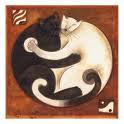 The first step in understanding Chinese medicine is to understand the theory of the Tao and the principle of Yin and Yang. Yin and Yang is the interrelationship between 2 polar energies. The dark vs. light, inside vs. outside, man vs. woman. Neither can exists without the other and must be in balance to exist in harmony. The Yang Ming, is the brightest Yang (the white kitty) and the Great Yin is the black kitty. To be in harmony, there must be a little yin in the yang and a little yang in the yin (the paws and tail). To apply this theory to health.... The Yin is your air-conditioner...it is cool and moist, while your Yang is the furnace. A Yin deficiency will show as false heat, or inability to cool down or deal with a hot environment or dryness which may show as cracked paws and dandruff. A Yin excess may have symptoms of extreme cold, slow pulse, depressed attitude and edema (too much fluid). A Yang excess will have symptoms of too much heat, red eyes, high metabolism, anxious, rapid heart rate, fever. While a Yang deficiency will show signs of extreme weakness and cold. Poor circulation, slow heart rate, the common symptoms of old age. Classifying the Yin/Yang imbalance helps us find the root of the problem. Chinese medicine treatment involves treating not only the symptoms of heat/cold (yang/yin) imbalance but also the root of the problem causing the imbalance with a combination of acupuncture, herbs, tui na, diet and/or environment change. Examples : Arthritis is treated differently if it is associated with a yin or yang deficiency or excess. Example 1 An old male dog with arthritis that is weak and warm seeking has a yang deficiency. His treatment would involve pain management and joint therapy with acupuncture, herbal and food therapy to support his yang (warm him). It may also include moxa treatments, back on track blankets and a heating pad on his bed in the winter. Treating the root of the problem with TCVM and a few environmental changes can provide a better quality of life than symptom management of alone. Example 2 An old female dog with arthritis that pants all the time, is cool seeking, restless at night, has stinky urine and has frequent bladder infections, may have hot, red, flaky skin has yin deficiency arthritis. Her treatment would also involve pain management but would include treatments to nourish the yin to help treat the root of the problem and hopefully soothe the heat signs. Western medicine treatment for both these dogs would involve NSAID, steroids and joint therapy such as oral or injectable glucosamine and Hyaluronic Acid. In my practice, I would treat the dogs yin def. or yang def with different TCVM treatments and would add joint therapy of injectable Gluc. and HA plus vitamin C and vitamin B but try to avoid NSAID and steroid use or be able to keep them comfortable on a smaller dose because of the side effects such as ulcers, liver damage, immune system damage, ect. Food therapy can also be a powerful treatment for these dogs. Most commercial dog foods contain corn or chicken as the main ingredient. Switching to a home cooked diet or adding fresh foods to supplement the diet can make a big difference. The addition of omega fatty acids such as fish oil or ground flax seed also has natural anti-inflammatory properties. Archived from 5elements4animals.com
originally posted on Jan 5, 2011 Acheologists determined that Neolithic man, 8000 years ago used a primitive type of acupuncture tool called the bian-shi. It is a pyramidal shaped stone used to lance boils and stimulate certain points on the body to relieve pain. Later a sharp piece of bone was used for the same purpose and during the Shang Dynasty (1600 BC to 1100 BC), the metal acupuncture needle was invented. As they tracked their clinical results, they discovered acupoints with similar functions formed a line on the body and the sensation of the de - Qi would follow a certain pathway...a meridian or Jing-Luo. There are 12 paired regular channels that relate to the organs and 8 extraordinary channels, 2 of which follow the midline. The Governing vessel on the dorsal midline and Conception vessel on the ventral midline. There are also collateral and divergent channels that are smaller branches of the major meridians that link the organs and meridians to one and other to form an intricately connected pathway throughout the body. You may have heard acupoints called different names by different practitioners. This is because we have several ways of naming the points. The Traditional nomenclature system is based on the location on the body, its corresponding organ, its therapeutic effect or a symbolic meaning. Some examples are Er - jian = tip of ear, Wei-shu = stomach association point, Jing-Ming = Brighten the eye, or Da-feng-men = great wind gate - which releases wind (seizure, itching, ect). The western nomenclature system names the meridian and the location on the meridian, for example, BL 1 is the 1st point on the bladder meridian. HT 9 is the 9th or last point on the heart meridian. In veterinary medicine, some of the points are transpositional, meaning we have changed the location slightly to get the desired result but have to use a different anatomic point because of anatomical differences, ie horses only have 1 finger/toe, we cut off the thumb and big toe of the dog (dew claws), people don't have tails and obviously Bl 67, on the little toe, the last point on the bladder meridian will be in a different place on a dolphin or snake. Archived from 5elements4animals.com
originally posted on Jan 11, 2011 What are meridians & what is their function ? The meridians transport qi,blood & nourishment throughout the body. In 400 bc, the ancients had no idea about the krebs cycle, the immune system, nerve conduction or lymphatic drainage. By observation, they realized that fluids & electrical impulses flowed throughout the body with supplementation from the external environment and this was necessary for life of all living things. The meridians also connect the organs & maintain homeostasis. How do our bodies maintain a constant temperature, maintain balance, how does our endocrine and immune system work ? We tend not to ponder these questions until we have a fever, get bedspins, suffer from diabetes or get a bee sting or fight off the flu. These questions have been answered relatively recently but practioners have been treating disease based on observations for thousands of years. If the bodies defenses become weak, the external invaders can use the meridians to transmit disease. For example, a particle of flu virus lands on your mucous membranes, enters your blood stream & replicates in your lungs & lymph nodes. The meridians also reflect the symptoms of disease which is how practitioners can make a diagnosis. For example, liver heat can manifest as yellowing of the sclera/jaundice and the eyes are associated with the liver. The meridians transport the therapeutic effects of herbal therapy & acupuncture. The arrival of the de qi is the reaction of the body to acupuncture. The de qi effect can feel like heat, tingling, pain or heaviness. Human patients can tell the dr what he feels. We vets look for muscle twitching or slight changes in behavior in our animal patients. The de qi response results in a release of endorphins, the bodies endogenous pain killers & muscle relaxers. I use 3 kinds of acupuncture in my practice : dry needle, electro and aqua acupuncture. Dry needle is simple insertion of small acupuncture needles. During electro acupuncture, the needles are connected to a battery powered stimulator to deliver a painless low voltage current to the meridian. For Aqua acupuncture, I inject a small volume of vit b 12 or glucosamine into the point. This causes a small blister and gives continual stimulation over a few days. |
�
Dr. WendyPractices Traditional Chinese Veterinary Medicine in Sarasota, Florida Categories
All
Archives
December 2023
|
|

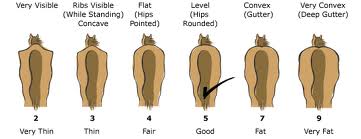
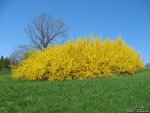
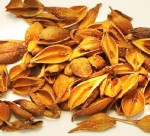


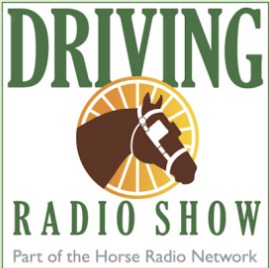

 RSS Feed
RSS Feed

